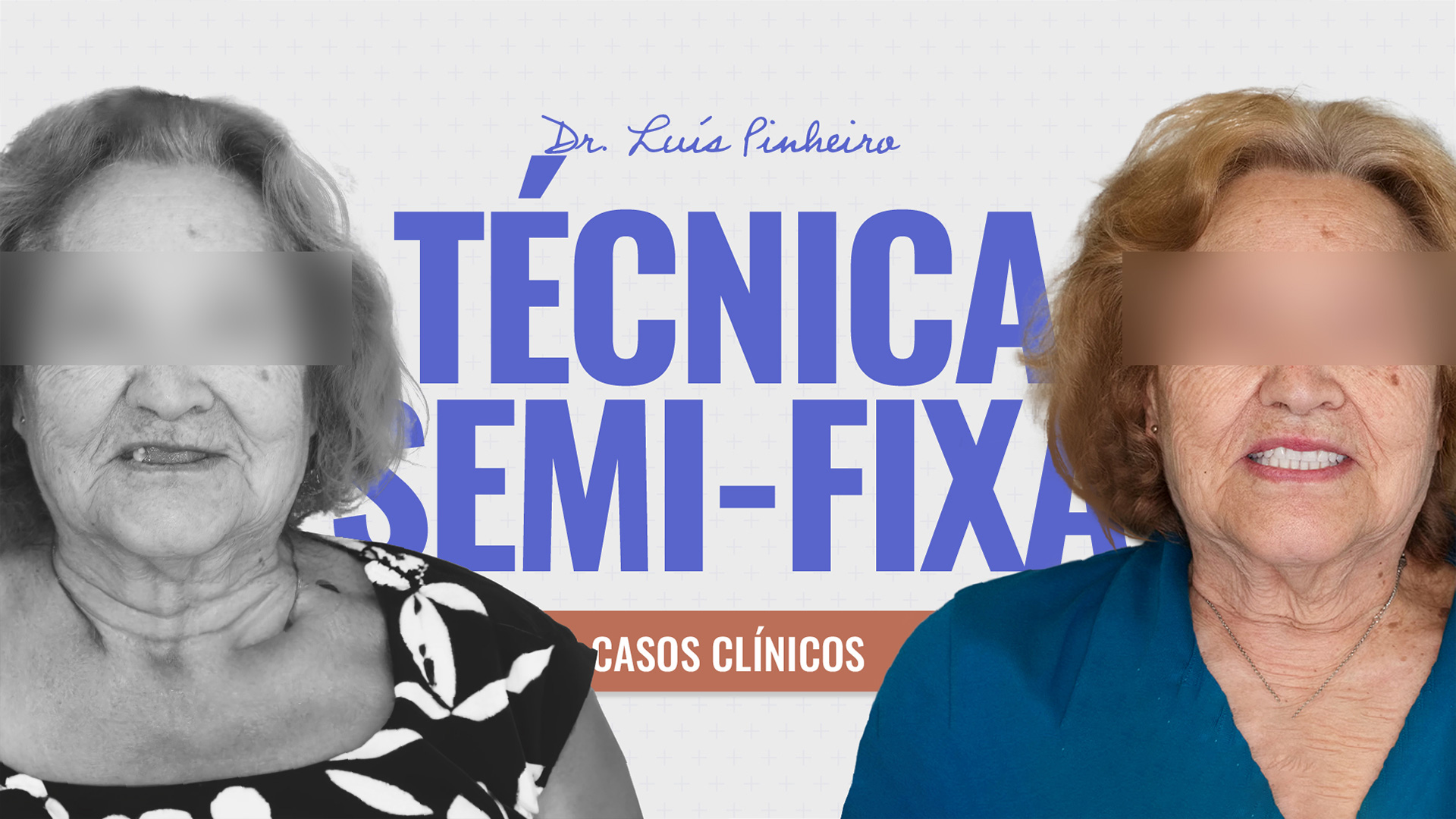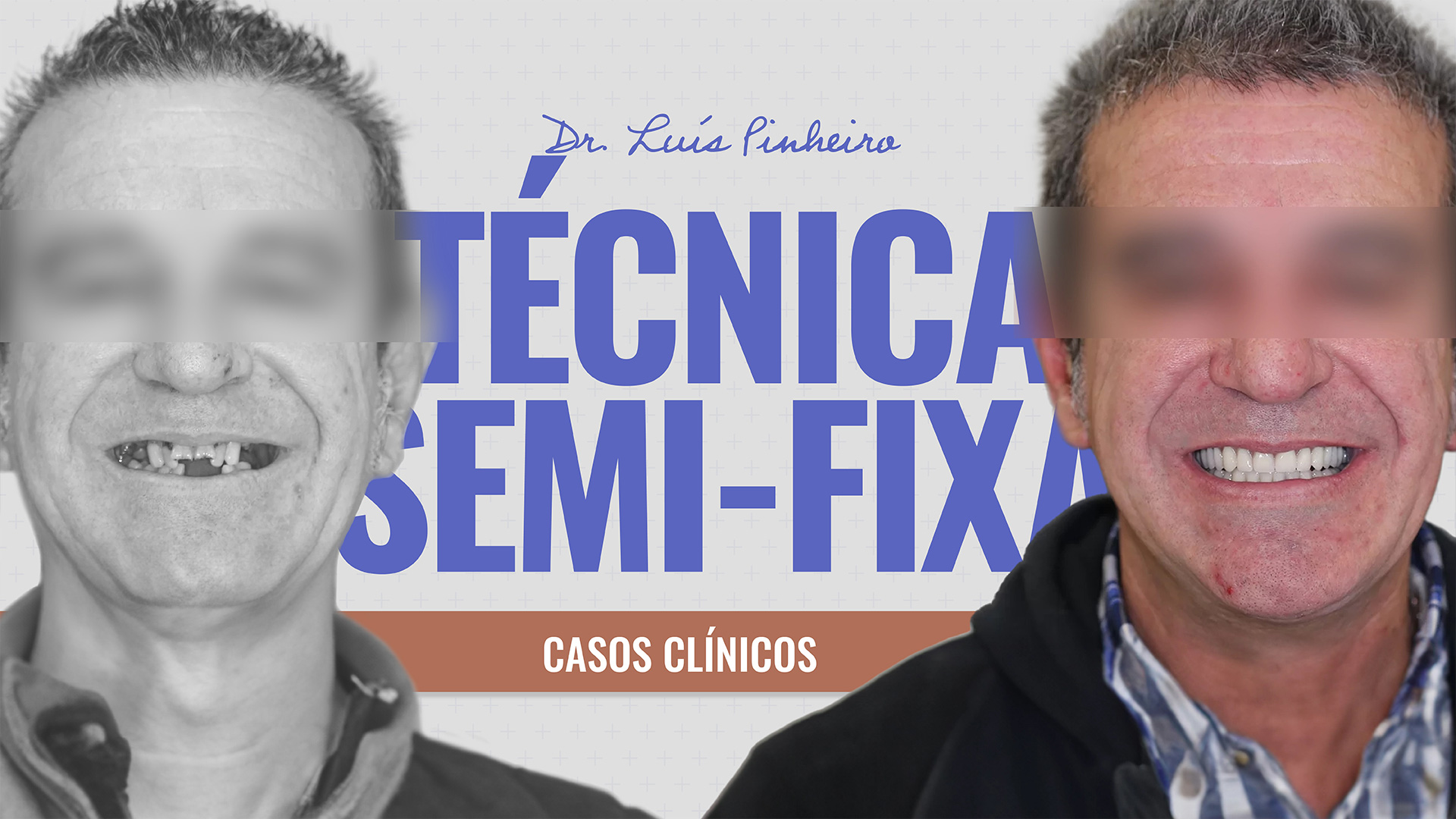This technique involves placing 3 implants per jaw, which are distributed according to the patient’s bone availability and in such a way as to make a triangle. Parts (Locators®) are screwed onto the implants, which are the male fittings for the female fittings that are placed in the prosthetic structure, thus holding the dental structure in place. One of the great advantages of this rehabilitation over traditional acrylic prostheses is that, in the case of the upper dental structure, there is no acrylic covering the roof of the mouth.
This solution means that you don’t have to remove the structures attached to the implants in order to carry out your daily oral hygiene.
It is especially suitable for patients who are totally edentulous and find it difficult to hold on to traditional acrylic dentures due to the marked loss of bone and gum, or for patients who are looking for a better solution than a simple acrylic prosthesis, but who for various reasons cannot make the Teeth in 1 Day Technique solution.
What is the advantage of this system?
It allows the structures to be retained more effectively, giving security when speaking, laughing and eating, when compared to the use of full dentures.
Its main indication is for patients who already wear dentures but have difficulty retaining them.
How many implants are needed for this technique?
This technique requires 3 or 4 implants, depending on the distribution of the patient’s remaining bone.
How is this system maintained?
Every 6 months, the retainers of the structures that suffer permanent daily wear need to be replaced. For patients outside Lisbon/Portugal.
If they can’t make it every 6 months, an annual visit may be in order, although the indication for 100% system operation is to change the retainers on the frameworks every six months.

Semi-fixed technique cases

Clinical Case – Semi-fixed Technique | 2
Semi-fixed technique 84 years old Lisbon Semi-fixed technique Allows the prosthetic structures to be retained more effectively, giving security when speaking, laughing and eating when compared to conventional prostheses. Our patient came to our Oral Rehabilitation consultation after my team and I had treated her daughter and son-in-law with complete rehabilitations. She gained courage after realizing that the recovery, the post-operative period and the final result of the treatments met the expectations of her closest relatives. She wanted her removable dentures to stop falling out when she spoke and ate. With this treatment, we were able to solve his problem of the last few decades in a simple way. He now visits us every year with his family for a maintenance appointment. Before After

Clinical Case – Semi-fixed Technique | 3
Semi-fixed technique 47 years old Almada Semi-fixed technique Allows the prosthetic structures to be retained more effectively, giving security when speaking, laughing and eating when compared to conventional prostheses. Our patient, after her brother had been rehabilitated by our team, also decided to have the “courage she lacked”, in her own words, to go ahead with her treatment. After all the tests and information had been discussed between us and the patient, she opted for this solution. She is very happy with the results of the treatment and comes to see us every six months. In the particular case of this patient and this treatment, we make two maintenance appointments a year. Before After

Clinical Case – Semi-fixed Technique | 4
Semi-fixed Technique 58 years old Almada Semi-fixed technique Allows for a more effective retention of prosthetic structures, giving security when speaking, laughing and eating when compared to conventional prostheses. As well as suffering from periodontal disease (gums and alveolar bone), our patient had been a smoker for many years and smoked many cigarettes a day. We managed to strike a balance with the patient in terms of the solution decided on for the treatment and the commitment needed to reduce smoking habits. He was able to chew again and is very happy with the aesthetics that the two semi-fixed structures now give him. Before After

